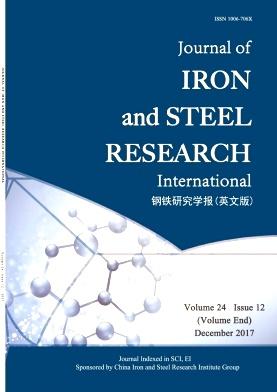Erosion corrosion of low-alloy wear-resistant steels in alkaline slurry
Abstract
Erosion corrosion causes significant problems in various industrial environments through a synergistic effect which results in much greater weight loss than the sum of the weight losses in the individual processes. The erosion-corrosion behavior of three low-alloy steels was investigated in a simulated concrete slurry using the rotation method. The key influencing factors and mechanism of material degradation were analyzed. The experimental results indicate that the weight loss increases with the linear velocity according to a nearly exponential relationship (W = KVn), where n is 1. 40–2. 14. This weight loss is mainly caused by erosion in the alkaline slurry, and steels with higher tensile strengths show higher erosion-corrosion resistance. The formation of many platelets and ring cracks and their removal from the sample surface during erosion corrosion in the slurry are thought to constitute the mechanism responsible for this weight loss. These platelets and ring cracks are formed by solid particles striking the sample surface. Craters are initially produced and subsequently disappear as they grow and come in contact with each other. Fewer craters were observed on the surfaces of samples that exhibited higher weight loss. The surface of the material became work-hardened because of the effect of the particles striking and scratching, and a deformed layer was produced on the surface for steels of lower strengths, leading to deeper and more abundant gouges.

 求助内容:
求助内容: 应助结果提醒方式:
应助结果提醒方式:


